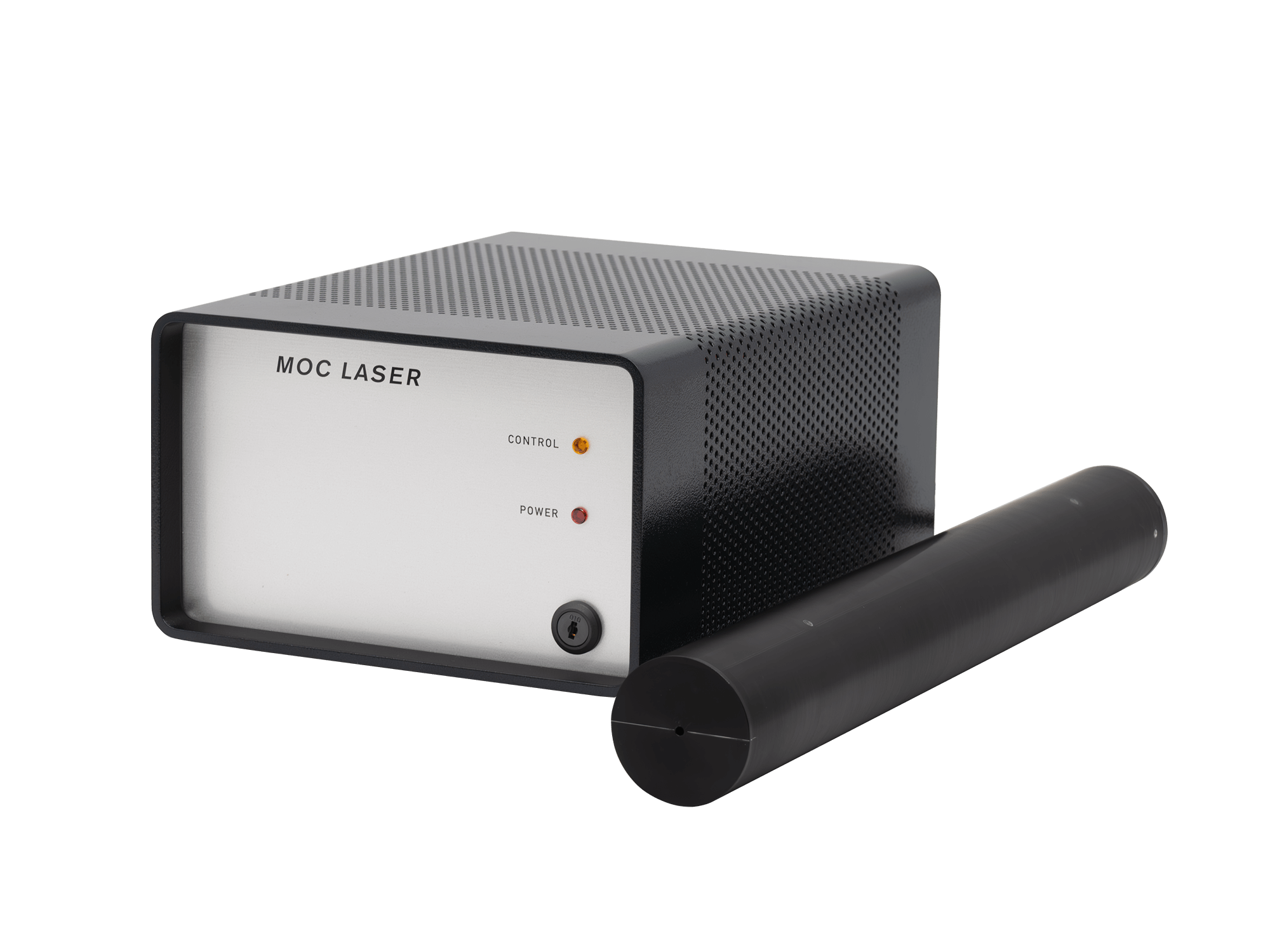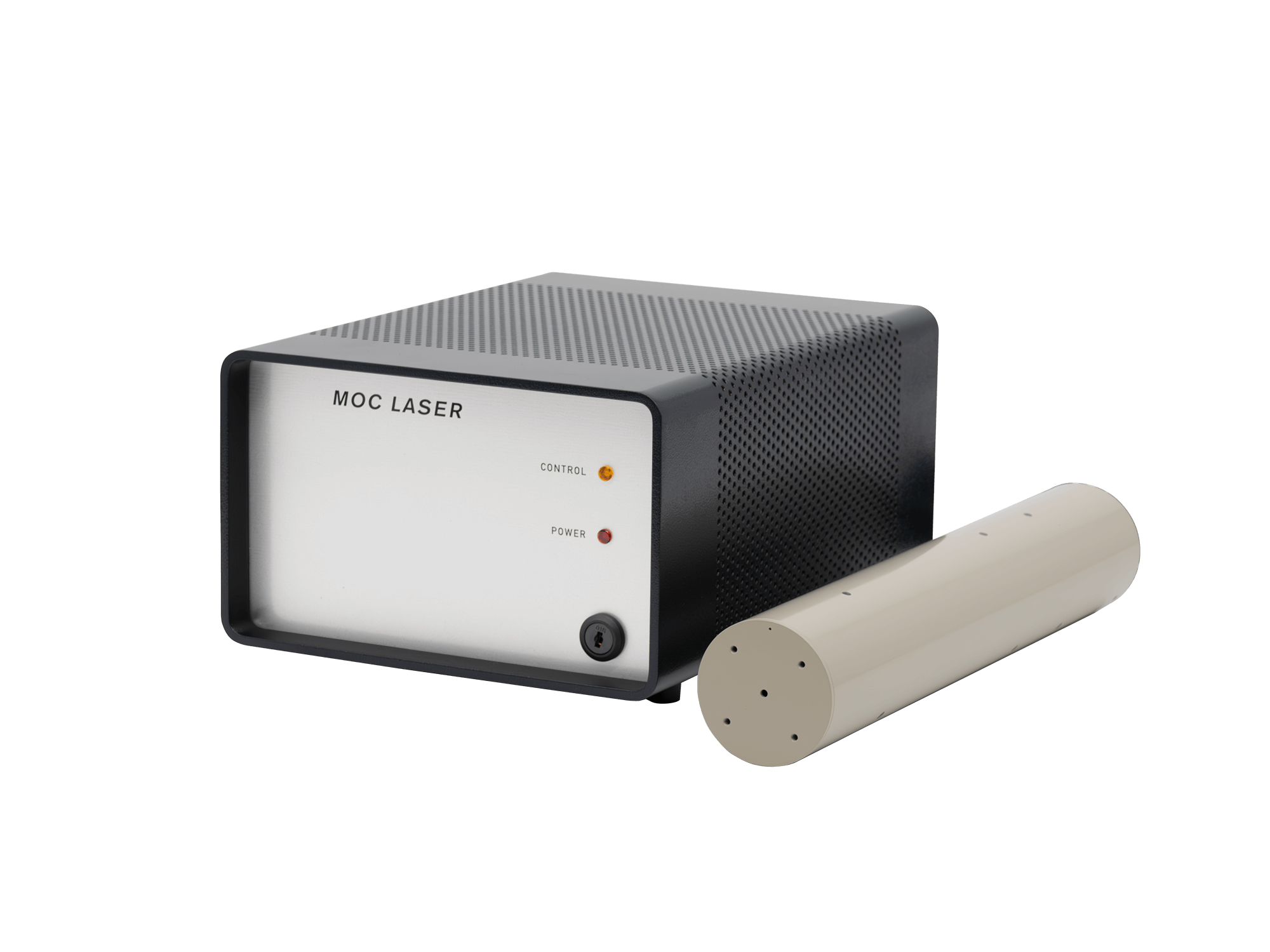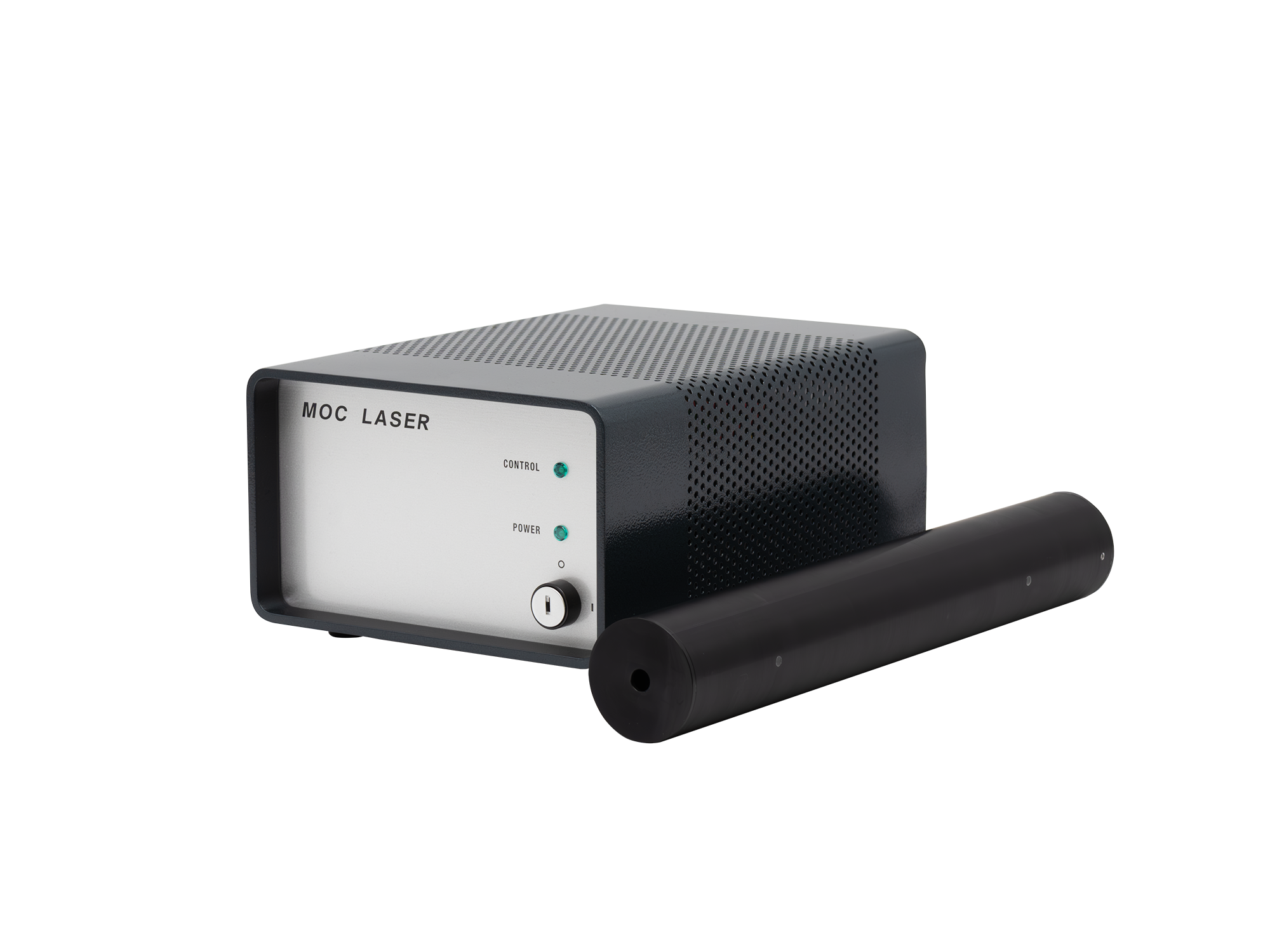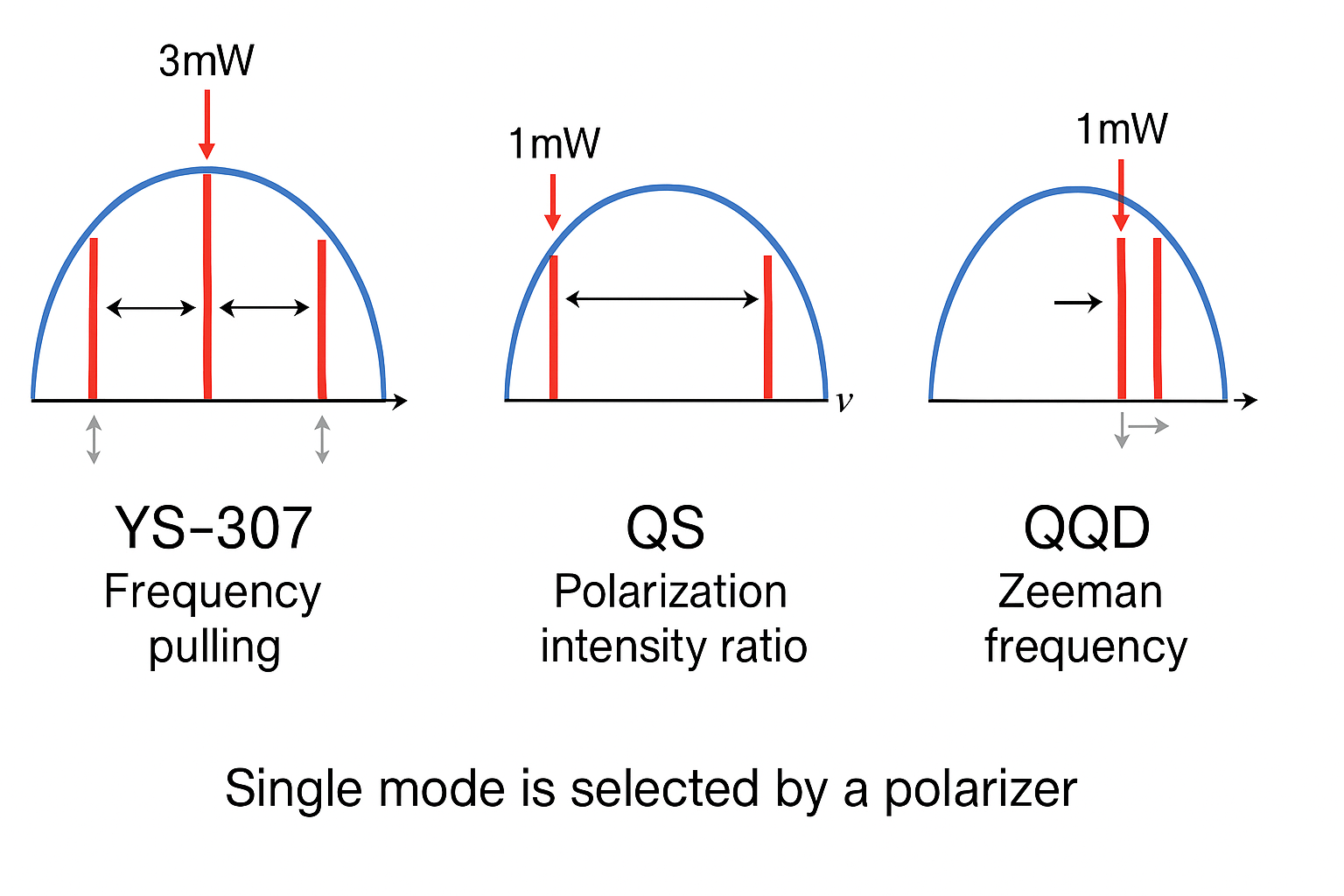Frequency Ultra-stabilized He-Ne Laser| MOC LASER (Micro Optics Co.,Ltd.)
Frequency ultra-stabilized He-Ne laser, MOC LASER , achieves 10-11-level frequency stability and 0.01 nm measurement accuracy per meter.
Widely adopted as a laser light source for high-precision measurement systems such as lens metrology for smartphone and automotive cameras, flatness measurement of semiconductor wafers, and birefringence evaluation for glass substrate.
Over 2,000 units delivered to equipment manufacturers worldwide.
We offer three product variations tailored to different applications and required stabilities:

Overview & Key Features of Frequency-Stabilized He-Ne Lasers
A helium–neon (He-Ne) laser uses a mixture of helium and neon gases as the gain medium. It is known for high beam quality, excellent coherence (interferability), and ease of use in precision applications.
In particular, frequency-stabilized He-Ne lasers are positioned within the length traceability hierarchy and are indispensable for nanometer to sub-nanometer length metrology and precision interferometry.
[Reference] JCSS Traceability Scheme: Example for Length (external link, Japanese)
At the top of the hierarchy sits the optical frequency comb of AIST (National Institute of Advanced Industrial Science and Technology), and frequency-stabilized He-Ne lasers are positioned as working/secondary standards that support practical calibration and inspection.
MOC LASER Products Line-up
| Products | P/N | Main Features |
|---|---|---|
 |
YS-307 |
By utilizing the frequency pulling effect, the YS-307 achieves ultra-high frequency stability in the order of 10-11, along with a 3 mW single-mode output. Its high output power makes it well-suited for multi-axis and high-speed interferometric measurements. Furthermore, by mode locking at the center of the neon gain curve, the system ensures excellent frequency repeatability upon reboot. |
 |
QQD |
The QQD model is a transversal Zeeman laser that stabilizes the frequency difference between two orthogonal frequency components generated by a transverse magnetic field.Its orthogonal dual-frequency output can be applied directly to the heterodyne interferometers without any additional devices. |
 |
QS |
The QS model stabilizes the power ratio between two oscillation modes, being provided with either single-mode or dual-mode operation. It covers wide-variety of applications requiring nanometer-level precision. |
Frequency Stabilization Methods

[Explanation] What is the Frequency Pulling Effect?
Case Studies: Frequency Ultra-Stabilized He-Ne Lasers
Case 1: Integration into a 3D Profilometer
Customer: A leading Japanese 3D Profilometer manufacturer
Application: MOC LASER (ES, QS base model) is adopted in a non-contact interferometric unit that enables nanometer to sub-nanometer 3D form and surface roughness measurement.
Case 2: Adoption in Wafer Flatness Measurement Equipment
Customer: A leading Japanese semiconductor equipment manufacturer
Application: MOC LASER (YS-307) is used in a flatness/shape measurement unit that evaluates wafer surface flatness and bow/warp with nanometer-level precision.
Case 3: Adoption in a Birefringence Interferometer for glass substrate
Customer: A Japanese optical instrument manufacturer
Application: MOC LASER (QQD) is integrated into a birefringence interferometer unit used for glass substrate evaluation.
